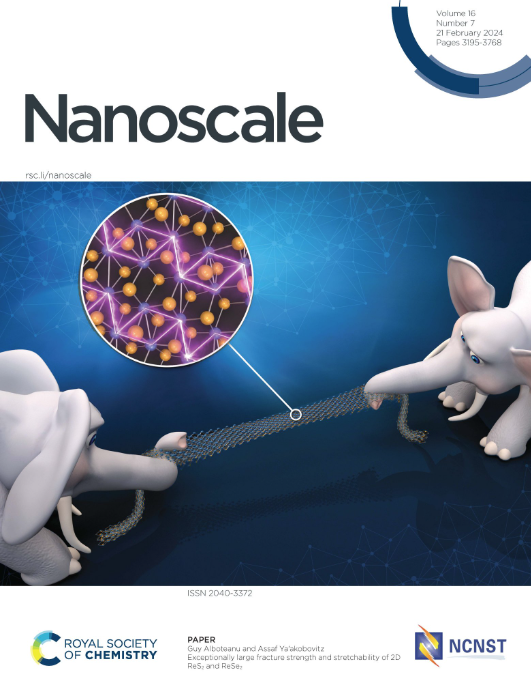Rubidium intercalation in epitaxial monolayer graphene
IF 5.8
3区 材料科学
Q1 CHEMISTRY, MULTIDISCIPLINARY
引用次数: 0
Abstract
Alkali metal intercalation of graphene layers has been of particular interest due to potential applications in electronics, energy storage, and catalysis. Rubidium (Rb) is one of the largest alkali metals and the one less investigated as intercalant. Here, we report a systematic investigation, with a multitechnique approach, of the phase formation of Rb under epitaxial monolayer graphene on SiC(0001). We explore a wide phase space with two control parameters: the Rb density (i.e., deposition time) and sample temperature (i.e., room- and low-temperature). We reveal the emergence of (2×2) and (√3×√3)R30° structures formed by a single alkali metal layer intercalated between monolayer graphene and the interfacial C-rich reconstructed surface, also known as buffer layer. Rb intercalation also results in a strong n-type doping of the graphene layer. Progressively annealing to high temperatures, we first reveal diffusion of Rb atoms which results in the enlargement of intercalated areas. As desorption sets in, intercalated regions progressively shrink and fragment. Eventually, at approximately 600 °C the initial surface is retrieved, indicating the reversibility of the intercalation process.铷在外延单层石墨烯中的嵌入
由于石墨烯层的碱金属嵌入在电子、能量存储和催化方面的潜在应用,一直受到人们的特别关注。铷(Rb)是最大的碱金属之一,也是研究较少的插入剂之一。在这里,我们报告了一项系统的研究,采用多技术方法,在SiC上的外延单层石墨烯下Rb的相形成(0001)。我们通过两个控制参数:Rb密度(即沉积时间)和样品温度(即室温和低温)来探索宽相空间。我们揭示了(2×2)和(√3×√3)R30°结构的出现,这些结构是由单层石墨烯和富含c的界面重构表面(也称为缓冲层)之间插入的单个碱金属层形成的。Rb嵌入也导致了石墨烯层的强n型掺杂。逐步退火至高温,我们首先发现Rb原子的扩散导致插层区域的扩大。随着解吸作用的开始,插层区域逐渐缩小和破碎。最终,在大约600°C时恢复初始表面,表明插入过程的可逆性。
本文章由计算机程序翻译,如有差异,请以英文原文为准。
求助全文
约1分钟内获得全文
求助全文
来源期刊

Nanoscale
CHEMISTRY, MULTIDISCIPLINARY-NANOSCIENCE & NANOTECHNOLOGY
CiteScore
12.10
自引率
3.00%
发文量
1628
审稿时长
1.6 months
期刊介绍:
Nanoscale is a high-impact international journal, publishing high-quality research across nanoscience and nanotechnology. Nanoscale publishes a full mix of research articles on experimental and theoretical work, including reviews, communications, and full papers.Highly interdisciplinary, this journal appeals to scientists, researchers and professionals interested in nanoscience and nanotechnology, quantum materials and quantum technology, including the areas of physics, chemistry, biology, medicine, materials, energy/environment, information technology, detection science, healthcare and drug discovery, and electronics.
 求助内容:
求助内容: 应助结果提醒方式:
应助结果提醒方式:


